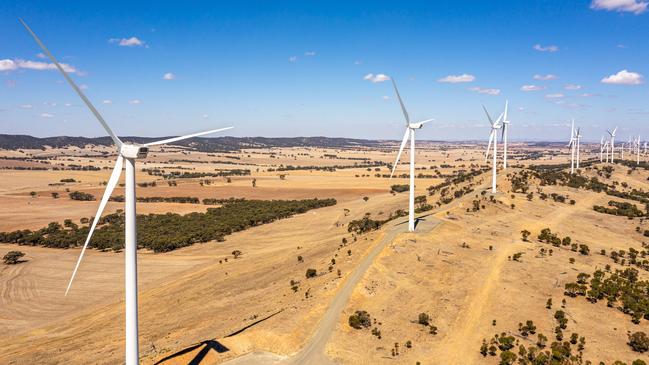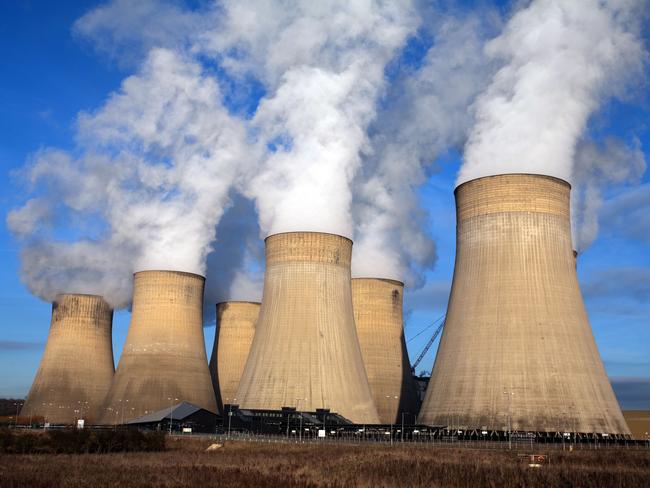Opinion: The more we install ‘cheaper’ energy sources, the more our bills go up
Are our lying eyes deceiving us, or is there something amiss with the complicated models the CSIRO employs, asks Matt Canavan.

Opinion
Don't miss out on the headlines from Opinion. Followed categories will be added to My News.
In the 1960s the CSIRO advised the Federal Government to not allow the export of coal to Japan because Australia’s coal reserves were just one-third of 1 per cent of the world’s. Fortunately, the Menzies government ignored the CSIRO.
The CSIRO’s estimate of our coal reserves was way off. We became the world’s largest coal exporter, and there is no end in sight of the bounty coal continues to deliver to our economic performance and public revenues.
Unfortunately, Australia has governments that demonstrate no independent thinking or leadership and have instead handed over the tough task of making decisions to self-appointed “experts”.
This week the CSIRO released another report on the relative cost of producing electricity by different means in Australia. Their report concluded that for the seventh year in a row, renewables had the lowest cost range of any new electricity generation.
And Australian governments have listened. We have installed wind and solar in Australia at a rate four times higher – in per-person terms – than anywhere else in the world. The share of electricity coming from wind and solar has gone from under 10 per cent to over a quarter in the past decade.
How is it, then, the more we install of this “lowest cost” power the higher our electricity prices go?
Retail electricity prices have doubled since we started our obsession with wind and solar.
And, wholesale power prices – which much of the Australian manufacturing industry pays – have surged from around $50 per megawatt hour to over $100 per megawatt hour.
What explains this glaring inconsistency between the CSIRO’s findings and the reality of life with renewable energy? Are our lying eyes deceiving us? Or is there something amiss with the complicated models that the CSIRO employs?
At the very least, it would be much wiser if our governments stopped taking the CSIRO’s advice at face value and started asking some tough questions about why their conclusions do not seem to be playing out in the real world. Even a cursory read of the CSIRO’s latest report reveals some issues.
To start with, the fine print of this year’s edition doesn’t quite say what the CSIRO says it says. On the basis of the CSIRO’s numbers, the low estimate for a new coal-fired power station is $102 per megawatt hour.

The low estimate for a renewable energy dominated grid is $106 per megawatt hour. So coal seems cheaper?
The CSIRO dismisses this anomaly by cherrypicking estimates for a lower share of renewable energy (at 80 not 90 per cent). But the lower prices in this scenario are a consequence of ... checks notes ... more coal and gas fired power being allowed to coexist with the so-called cheap renewable energy!
There are even bigger problems with the CSIRO’s figures. To estimate the costs of a new coal-fired power station, the CSIRO assumes that they would last for just 30 years even though our current fleet of plants run for 50 years or more. Changing this assumption alone would make coal much cheaper than wind or solar.
Further, the CSIRO takes as an estimate of the cost of coal as a bizarre range between the average of all coal prices and the maximum. The CSIRO refuses to use the minimum coal price because they claim such low costs would not be available to a new plant.
This ignores the fact that some coal plants get coal from mines that are not connected to export markets and hence could deliver low mine mouth costs to a power plant, even a new one.
The CSIRO also ignores the potential to refurbish existing coal plants which would deliver even lower energy costs.
The Centre For Independent Studies has recalculated the CSIRO’s numbers adjusting for their anti-coal bias. They find that coal could instead deliver power for as low as $35 per megawatt (for refurbishments) and $51 per MWh for a new build. Those figures are much closer to what we paid for electricity before we began installing the “cheapest” form of electricity.
As in the 1960s, the CSIRO has not had a great recent record of predictions. In 2008, the CSIRO warned that we could pay $8 per litre for petrol by 2018!
We should not be too hard on the CSIRO. As Yogi Berra once remarked, predictions are very difficult, especially when they are about the future.
We should be much harder on the naive ministers who swallow the expert advice without remembering the wisdom of physicist Niels Bohr, who said an expert was a person who had made all the mistakes that could be made in a very narrow field.





